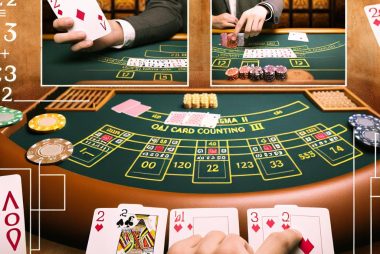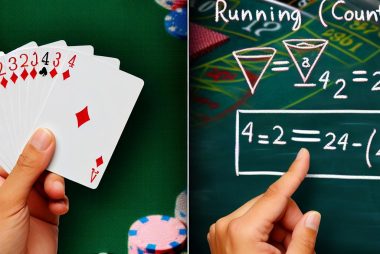The Omega II card counting system
The Omega II Card Counting System
The Omega II card counting system is an advanced technique used chiefly in the game of blackjack to provide players with an advantage over the casino, often referred to as the “house.” Created by Bruce Carlson, this methodology stands out for its balanced and multi-level approach. Unlike simpler systems, Omega II requires the player to assign varying values to different cards. This differentiation enables a more precise calculation of the deck’s current composition, allowing players to enhance their betting and playing strategy based on the most up-to-date information.
Understanding the Card Values
The Omega II system employs a more intricate structure than the widely recognized basic Hi-Lo system. In Omega II, the assignment of card values is as follows:
The cards numbered 2, 3, and 7 are given a value of +1. This positive value indicates that the presence of these cards in the deck is slightly favorable to the player’s chances of winning. The cards 4, 5, and 6 have an even more pronounced positive value of +2. In this system, these middle-value cards are highly beneficial to the player because their presence means that low cards are being removed from the deck at a faster rate, increasing the chance of higher-value card presence, which benefits the player.
Conversely, the card 9 has a value of -1, which suggests that its presence is slightly favorable to the house. The higher cards 10, Jack, Queen, King, and Ace have a more significant negative impact, each assigned a value of -2. The removal of these cards from the deck benefits the house more as it decreases the player’s chances of getting blackjack or high hands. Meanwhile, the card 8 is considered neutral with a value of 0, meaning its removal or presence has no notable impact on game strategy.
Maintaining the Running Count
In order to effectively utilize the Omega II system, players must keep a running count. As cards are dealt, the player needs to adjust the count by adding or subtracting based on the card’s value. This procedure demands precision and practice; without a disciplined approach, the effectiveness of the card counting system can be easily compromised. Accurately maintaining this count is crucial in determining whether the remaining cards are likely to be advantageous for the player or the dealer.
Maintaining a precise running count allows players to make informed actions on each hand, increasing bet sizes when the count suggests a favorable deck or reducing bets when the deck is less favorable. Furthermore, it can influence decision-making during the game, such as choosing to hit, stand, or double down, enhancing the potential return over a long period of play.
Converting to the True Count
To amplify the accuracy of the running count, players using the Omega II system must convert it into a true count. This conversion consists of dividing the running count by the number of decks that remain in the shoe. Calculating the true count provides a clearer indication of the deck’s favorability in relation to the ongoing depletion of the shoe. By considering the total number of decks, players offset the dilution effect that occurs in multi-deck games, allowing for more precise actionable insights.
Understanding the true count is especially vital in environments where multiple decks are used, as the influence of individual cards is less pronounced compared to a single-deck game. The true count helps adjust the running count’s sensitivity and allows players to maintain strategic effectiveness regardless of the number of decks in play.
Practicing the Omega II Strategy
Like any advanced card counting systems, mastering Omega II necessitates a substantial amount of dedication and consistent practice. Players need to develop both speed and accuracy in maintaining the running and true counts. For beginners, it is often recommended to practice in low-stakes environments such as smaller tables or through the use of simulation software. This controlled setting provides a safe and effective learning platform to hone skills without the financial burden associated with higher stakes.
There are several tools and resources available that can assist dedicated players in mastering the Omega II method. Various websites offer an array of simulation tools, strategy guides, and community forums where enthusiasts can connect to share tips, experiences, and insights. Engaging in casino gaming forums and blackjack discussions can be immensely beneficial for gaining advanced strategies and understanding common pitfalls. Participation in these forums often leads to a deeper understanding of the mechanics behind the system and its applications in real-world scenarios.
Further reading and resources on mastering and implementing the Omega II card counting system can be found through a variety of blackjack strategy guides and specialized casino gaming forums. These resources can supply deeper insights and provide guidance in refining card counting skills. Whether through printed material or interactive online resources, players can continually enhance their strategic approach to the game. By fully understanding and practicing the tenets of the Omega II card counting system, enthusiasts can optimize their playing strategies and confront the challenges of blackjack with greater confidence and potential success.




